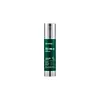What's inside
What's inside
 Key Ingredients
Key Ingredients

 Benefits
Benefits

 Concerns
Concerns

 Ingredients Side-by-side
Ingredients Side-by-side

Water
Skin ConditioningGlycerin
HumectantDipropylene Glycol
HumectantNiacinamide
SmoothingButylene Glycol
HumectantPropanediol
Solvent1,2-Hexanediol
Skin ConditioningCarbomer
Emulsion StabilisingTromethamine
BufferingHydroxyacetophenone
AntioxidantHydrolyzed Sponge
Skin ConditioningGlycereth-25 PCA Isostearate
EmulsifyingEthylhexylglycerin
Skin ConditioningHydrolyzed Gardenia Florida Extract
AntioxidantHydrolyzed Malt Extract
Skin ConditioningAdenosine
Skin ConditioningHydrolyzed Viola Tricolor Extract
Skin ProtectingXanthan Gum
EmulsifyingDisodium EDTA
Hyaluronic Acid
HumectantHydrolyzed Hyaluronic Acid
HumectantSodium Hyaluronate
HumectantXylitylglucoside
HumectantAnhydroxylitol
HumectantXylitol
HumectantColloidal Sulfur
AntimicrobialPentylene Glycol
Skin ConditioningCarica Papaya Fruit Extract
Skin ConditioningFicus Carica Fruit Extract
HumectantGinkgo Biloba Nut Extract
Skin ConditioningMorus Alba Fruit Extract
AntioxidantMalus Domestica Fruit Extract
AntioxidantPrunus Mume Fruit Extract
HumectantPunica Granatum Fruit Extract
AntioxidantVitis Vinifera Fruit Extract
Skin ConditioningCentella Asiatica Extract
CleansingMadecassoside
AntioxidantDecyl Glucoside
CleansingCaprylyl Glycol
EmollientCitric Acid
BufferingSalicylic Acid
MaskingSuccinic Acid
BufferingHesperidin
EmollientHydrogenated Lecithin
EmulsifyingPanthenol
Skin ConditioningPolyglyceryl-10 Laurate
Skin ConditioningAsiaticoside
AntioxidantAsiatic Acid
Skin ConditioningMadecassic Acid
Skin ConditioningSodium Ascorbyl Phosphate
AntioxidantBiotin
AntiseborrhoeicFolic Acid
Skin ConditioningPyridoxine
Skin ConditioningCyanocobalamin
Skin ConditioningTocopherol
AntioxidantBeta-Carotene
Skin ConditioningRiboflavin
Cosmetic ColorantThiamine Hcl
MaskingParfum
MaskingWater, Glycerin, Dipropylene Glycol, Niacinamide, Butylene Glycol, Propanediol, 1,2-Hexanediol, Carbomer, Tromethamine, Hydroxyacetophenone, Hydrolyzed Sponge, Glycereth-25 PCA Isostearate, Ethylhexylglycerin, Hydrolyzed Gardenia Florida Extract, Hydrolyzed Malt Extract, Adenosine, Hydrolyzed Viola Tricolor Extract, Xanthan Gum, Disodium EDTA, Hyaluronic Acid, Hydrolyzed Hyaluronic Acid, Sodium Hyaluronate, Xylitylglucoside, Anhydroxylitol, Xylitol, Colloidal Sulfur, Pentylene Glycol, Carica Papaya Fruit Extract, Ficus Carica Fruit Extract, Ginkgo Biloba Nut Extract, Morus Alba Fruit Extract, Malus Domestica Fruit Extract, Prunus Mume Fruit Extract, Punica Granatum Fruit Extract, Vitis Vinifera Fruit Extract, Centella Asiatica Extract, Madecassoside, Decyl Glucoside, Caprylyl Glycol, Citric Acid, Salicylic Acid, Succinic Acid, Hesperidin, Hydrogenated Lecithin, Panthenol, Polyglyceryl-10 Laurate, Asiaticoside, Asiatic Acid, Madecassic Acid, Sodium Ascorbyl Phosphate, Biotin, Folic Acid, Pyridoxine, Cyanocobalamin, Tocopherol, Beta-Carotene, Riboflavin, Thiamine Hcl, Parfum
 Reviews
Reviews

Ingredients Explained
These ingredients are found in both products.
Ingredients higher up in an ingredient list are typically present in a larger amount.
Niacinamide is a multitasking form of vitamin B3 that strengthens the skin barrier, reduces pores and dark spots, regulates oil, and improves signs of aging.
And the best part? It's gentle and well-tolerated by most skin types, including sensitive and reactive skin.
You might have heard of "niacin flush", or the reddening of skin that causes itchiness. Niacinamide has not been found to cause this.
In very rare cases, some individuals may not be able to tolerate niacinamide at all or experience an allergic reaction to it.
If you are experiencing flaking, irritation, and dryness with this ingredient, be sure to double check all your products as this ingredient can be found in all categories of skincare.
When incorporating niacinamide into your routine, look out for concentration amounts. Typically, 5% niacinamide provides benefits such as fading dark spots. However, if you have sensitive skin, it is better to begin with a smaller concentration.
When you apply niacinamide to your skin, your body converts it into nicotinamide adenine dinucleotide (NAD). NAD is an essential coenzyme that is already found in your cells as "fuel" and powers countless biological processes.
In your skin, NAD helps repair cell damage, produce new healthy cells, support collagen production, strengthen the skin barrier, and fight environmental stressors (like UV and pollution).
Our natural NAD levels start to decline with age, leading to slower skin repair, visible aging, and a weaker skin barrier. By providing your skin niacinamide, you're recharging your skin's NAD levels. This leads to stronger, healthier, and younger looking skin.
Another name for vitamin B3 is nicotinamide. This vitamin is water-soluble and our bodies don't store it. We obtain Vitamin B3 from either food or skincare. Meat, fish, wheat, yeast, and leafy greens contain vitamin B3.
The type of niacinamide used in skincare is synthetically created.
Learn more about NiacinamidePentylene glycol is typically used within a product to thicken it. It also adds a smooth, soft, and moisturizing feel to the product. It is naturally found in plants such as sugar beets.
The hydrophilic trait of Pentylene Glycol makes it a humectant. As a humectant, Pentylene Glycol helps draw moisture from the air to your skin. This can help keep your skin hydrated.
This property also makes Pentylene Glycol a great texture enhancer. It can also help thicken or stabilize a product.
Pentylene Glycol also acts as a mild preservative and helps to keep a product microbe-free.
Some people may experience mild eye and skin irritation from Pentylene Glycol. We always recommend speaking with a professional about using this ingredient in your routine.
Pentylene Glycol has a low molecular weight and is part of the 1,2-glycol family.
Learn more about Pentylene GlycolWater. It's the most common cosmetic ingredient of all. You'll usually see it at the top of ingredient lists, meaning that it makes up the largest part of the product.
So why is it so popular? Water most often acts as a solvent - this means that it helps dissolve other ingredients into the formulation.
You'll also recognize water as that liquid we all need to stay alive. If you see this, drink a glass of water. Stay hydrated!
Learn more about WaterXanthan gum is used as a stabilizer and thickener within cosmetic products. It helps give products a sticky, thick feeling - preventing them from being too runny.
On the technical side of things, xanthan gum is a polysaccharide - a combination consisting of multiple sugar molecules bonded together.
Xanthan gum is a pretty common and great ingredient. It is a natural, non-toxic, non-irritating ingredient that is also commonly used in food products.
Learn more about Xanthan Gum